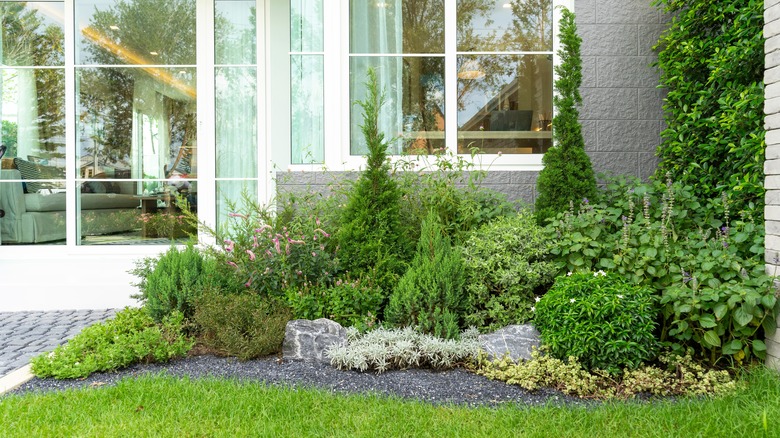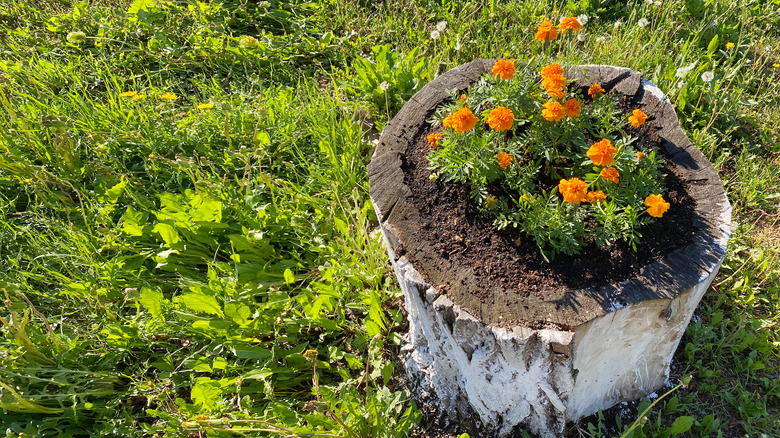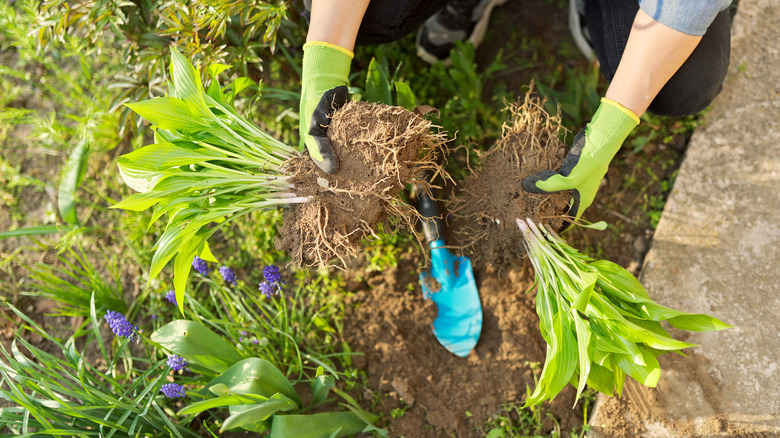What's A Pocket Garden And How Do You Create One In Your Outdoor Space?
Are you limited on outdoor gardening space but dying to get your hands in the dirt? Not sure what to do with a hollow tree stump or awkward alleyway? Pocket gardening may be the perfect solution for city dwellers and other small-scale gardeners. As such, a pocket garden is a small garden in an unexpected spot, such as in that alleyway, beside a fence, along a sidewalk, or even around the edges of a patio. Pocket gardens can be contained in raised beds or pots, or dug into the earth. Essentially, this type of garden makes the most use out of minimal space and ensures that no square footage goes to waste, turning any forgotten corner into a stunning flower garden or vegetable patch. To make your own, all you need is a sunny "pocket" of space, several low-maintenance plants of your choice, and a little creativity.
In general, pocket gardens are low-effort, low-cost gardens that are ideal for filling in awkward spaces, but they can easily become your favorite part of the yard and even bring fresh food to your table. Here's what you need to know about establishing and maintaining a pocket garden — or three!
Creating pockets of positivity
Almost every home has a few hidden, messy nooks that seem to go ignored. Pocket gardens are a perfect solution for filling gaps between walkways or outdoor seating areas, and they can do more than just improve the aesthetic value of your space. According to the University of Minnesota, simply being around more plant life is good for your mental health and can vastly improve your mood and relieve anxiety. Plus, gardening is a great low-impact exercise to get your body moving, stretching, and breathing fresh air. Instead of limiting yourself to one garden space, spread your projects out into multiple pockets or mini-gardens throughout your yard to encourage gentle movement and natural-looking surroundings. For people who don't have the time, energy, or physical strength to maintain one oversized plot, these pockets can feel like a much more manageable undertaking.
Still, the big question remains: Where should you put your pocket garden(s)? Since they're designed to be small and resilient, you can get pretty creative regarding location. Hollow tree stumps, dried-up ponds, spaces between sidewalks, and corners by the house's walls are classic spots for a pocket garden. If you're limited on yard space, consider the vertical possibilities that come with walls, hanging planters, fence lines, railings, stairways, and beams. Most importantly, place your pocket garden somewhere where you can interact with it and enjoy it often!
Planning and maintaining your pocket garden
When planning what to grow in your pocket garden, it's important to consider the natural conditions of your yard. Drainage and sunlight are two of the biggest concerns when you're growing plants, so you may need to lay river stones, create a drain line, or build a raised bed to make the area more suitable for growth. Because pocket gardens are meant to be low-maintenance, choose plants that will thrive in your environment's natural conditions, rather than fighting against nature. Native plants and wildflowers are great options because they require minimal intervention in order to thrive. Of course, you can also choose edible plants that do well in tight spaces like chard, lettuce, radishes, carrots, garlic, basil, mint, and other herbs.
By nature, pocket gardens should be rather self-sufficient, but like all gardens, they'll benefit from your help from time to time. To keep up with regular maintenance and ensure your pocket garden thrives, water the ground regularly during dry seasons, fertilize when appropriate, and refresh the soil every few years. Before you know it, you'll have full and blooming pockets all around your property.


